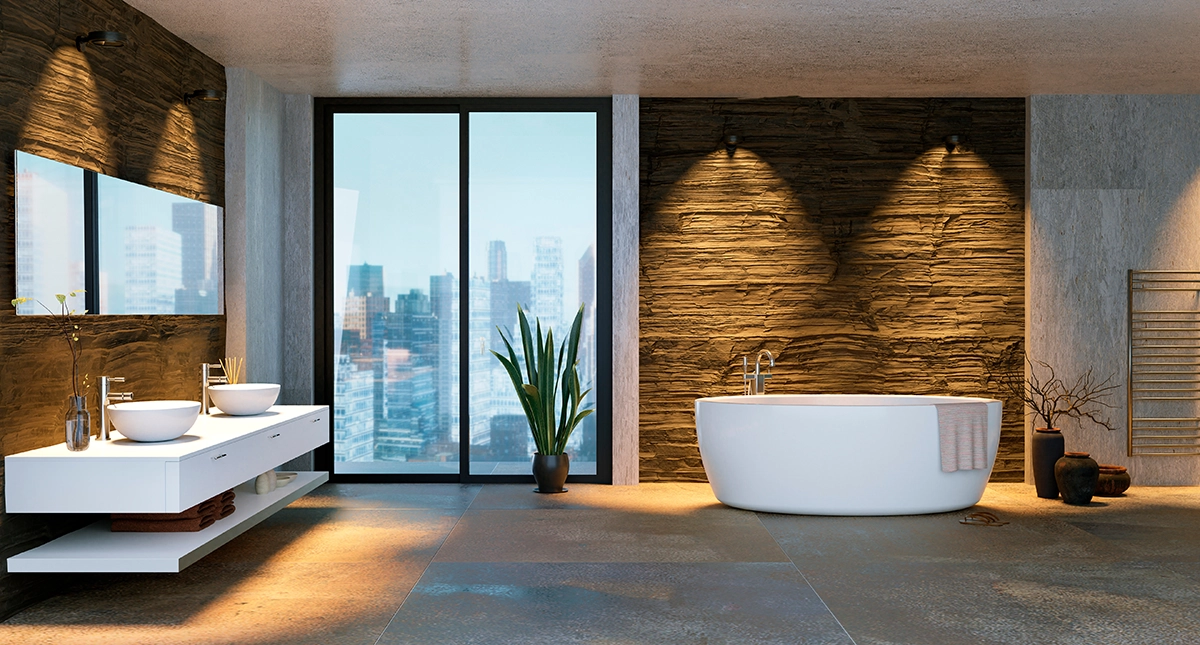What is Texture in Interior Design?
In the world of interior design, there is one element that often gets overlooked but has the power to transform a space like no other. From smooth surfaces to rough finishes, the role of texture in interior design cannot be underestimated. Whether you want to create a cozy and inviting atmosphere or a contemporary and sleek look, texture plays a crucial role in enhancing your space.
Texture adds depth and visual interest to a room, making it more visually appealing. It can be incorporated through various elements such as furniture, fabrics, wall coverings, and flooring. A plush rug, a textured wallpaper, or a cozy knit throw can instantly add warmth and comfort to a room.

Conversely, a sleek glass table or polished marble countertop can create a modern and sophisticated vibe. Incorporating texture into your interior design not only adds visual appeal but also creates a tactile experience. The role of texture in interior design is an essential element in creating balance in your spaces. Texture influences how light is reflected and the appearance of colors, bringing visual depth to your spaces.

Textures Appeal to our Senses
Running your hand along a textured wall or sinking your feet into a plush carpet can evoke a sense of comfort and luxury. It adds a dimension of sensory pleasure that cannot be achieved through sight alone.
So, whether you’re aiming for a cozy retreat or a contemporary haven, don’t overlook the power of texture in your interior design. By incorporating different textures, you can create a space that is visually captivating and inviting to touch, ultimately enhancing your overall experience.
For instance, rose petals and hay are two very different textures, and they can evoke very different feelings in people.
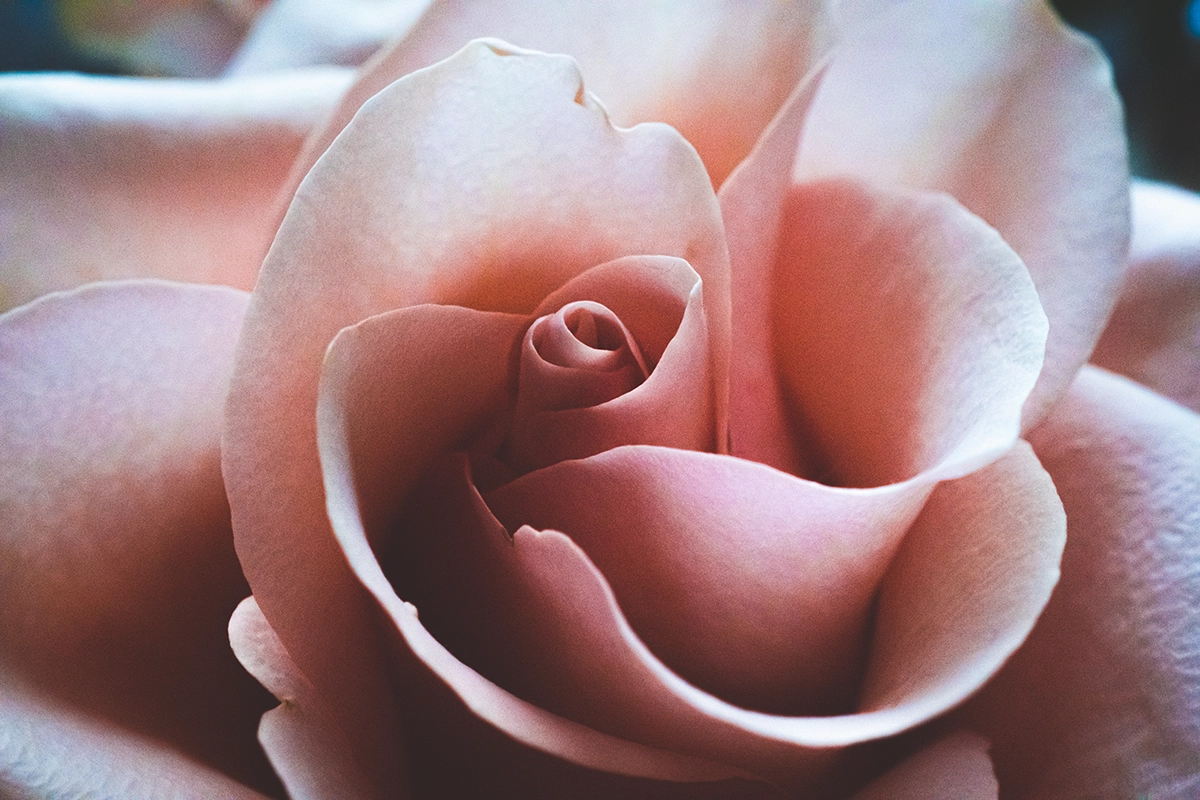
Rose petals are soft, delicate, and luxurious. They are often associated with romance, beauty, and femininity. In interior design, rose petals can be used to create a soft and inviting atmosphere. For example, you could use rose petal-inspired wallpaper or curtains to add a touch of romance to your bedroom, or you could place a vase of fresh rose petals on your coffee table to create a welcoming and inviting space.
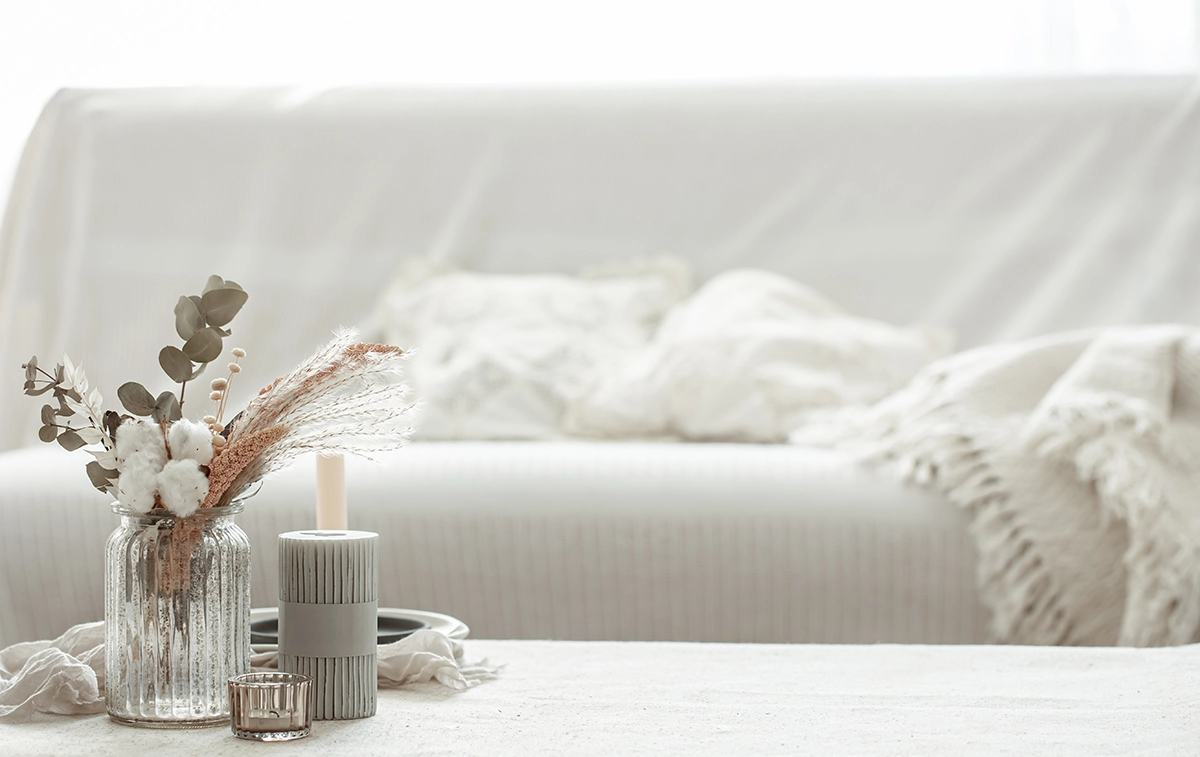
- Feeling: Soft, delicate, luxurious, romantic, beautiful, feminine
- Interior design examples: Rose petal-inspired wallpaper, soft curtains, soft luxurious bedding, silk throw pillows, linen rugs, candles, soap, incense
- Atmosphere: Soft, inviting, romantic, luxurious, feminine
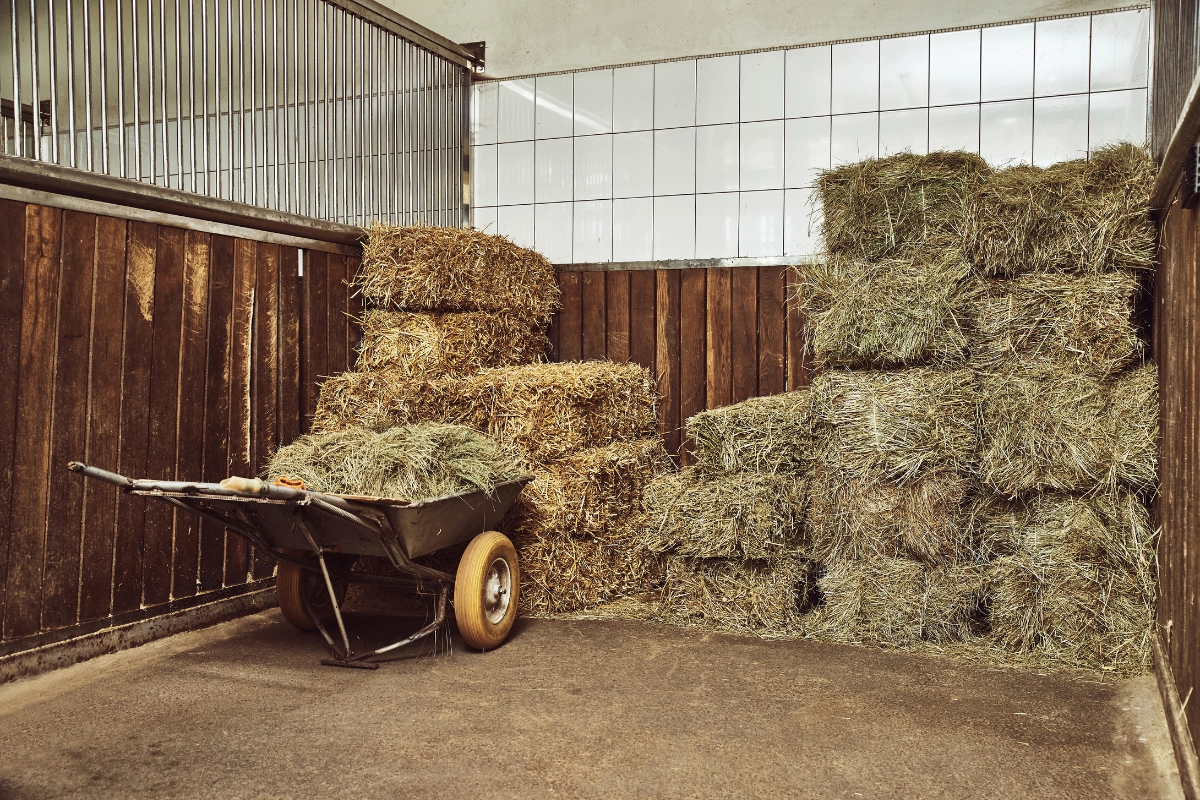
Hay has a dry, coarse texture. It is often associated with nature, simplicity, and rustic charm. In interior design, hay can be used to create a warm and earthy atmosphere. For example, you could use a hay-inspired rug or placemats to add a touch of rustic charm to your kitchen or dining room, or you could place a basket of hay on your fireplace hearth to create a cozy and inviting space.

- Feeling: Dry, coarse, natural, simple, rustic, charming
- Interior design examples: Hay-inspired rugs such as jute or other natural fibers, burlap placemats, baskets, wreaths, garlands, natural wood grains, and other rustic decor pieces such as terracotta
- Atmosphere: Warm, earthy, rustic, charming, inviting
It is important to note that these are just general interpretations. The way that people perceive different textures can vary depending on their personal experiences and preferences. Ultimately, the best way to choose textures for your home decor is to experiment and find what you like best. Pay attention to the way that different textures make you feel, and choose textures that create the desired atmosphere in your space.

Organic and Manmade Textures
Organic Textures
Organic textures are textures that are found in nature. They are often characterized by their irregular and imperfect patterns, as well as their soft and inviting feel.
Organic textures can be used in a variety of ways to add warmth, depth, and interest to your home decor. For example, you can use a wood coffee table to add a natural element to your living room, or you can place a fur rug on the floor of your bedroom to create a cozy and inviting space. You can also use organic materials in your kitchen, such as a bamboo cutting board or a linen tablecloth.
No matter how you choose to use them, organic textures are a great way to add a touch of nature to your home.
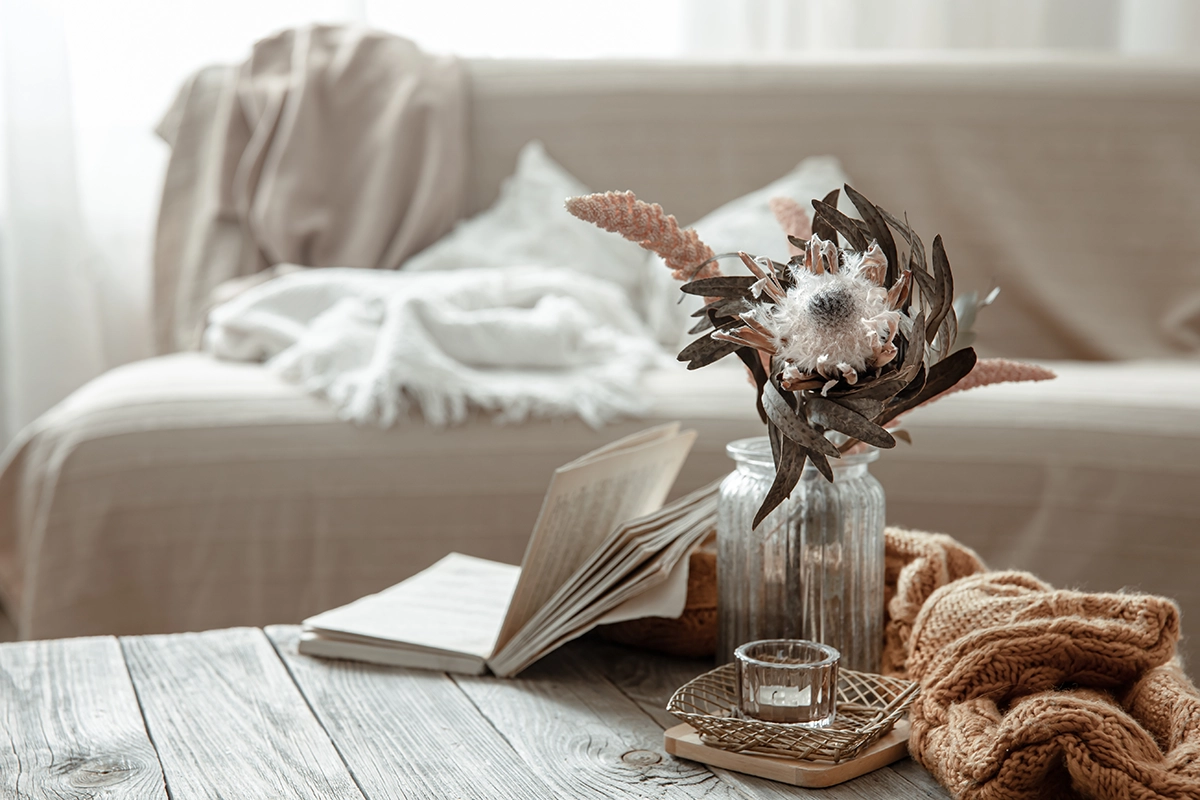
Here are some more specific examples of organic textures that you can use in your home decor:
- Wood: driftwood, reclaimed wood, barn wood, live edge wood
- Stone: river rock, slate, marble, travertine
- Bamboo: woven bamboo blinds, bamboo placemats, bamboo furniture
- Leather: leather sofa, leather ottoman, leather coasters
- Fur: sheepskin throw rug, faux fur pillows, fur blanket
- Wool: wool rug, wool blanket, wool sweater pillow
- Cotton: cotton throw pillows, cotton bedding, cotton towels
- Linen: linen tablecloth, linen napkins, linen curtains
- Moss: moss wall, moss terrarium, moss ball
- Bark: birch bark candle holder, bark vase, bark mirror frame
- Flowers: fresh flowers in a vase, dried flowers in a wreath, floral print wallpaper
- Leaves: palm leaf fan, leaf-shaped mirror, leaf print wallpaper
Manmade Textures
Manmade textures can be used in a variety of ways to add a modern and sophisticated look to your home decor. For example, you can use a metal coffee table to add a touch of glamour to your living room, or you can hang a glass pendant light over your dining table to create a dramatic focal point. You can also use manmade materials in your kitchen, such as a stainless steel countertop or a concrete backsplash.
No matter how you choose to use them, manmade textures are a great way to add a touch of modern style to your home.
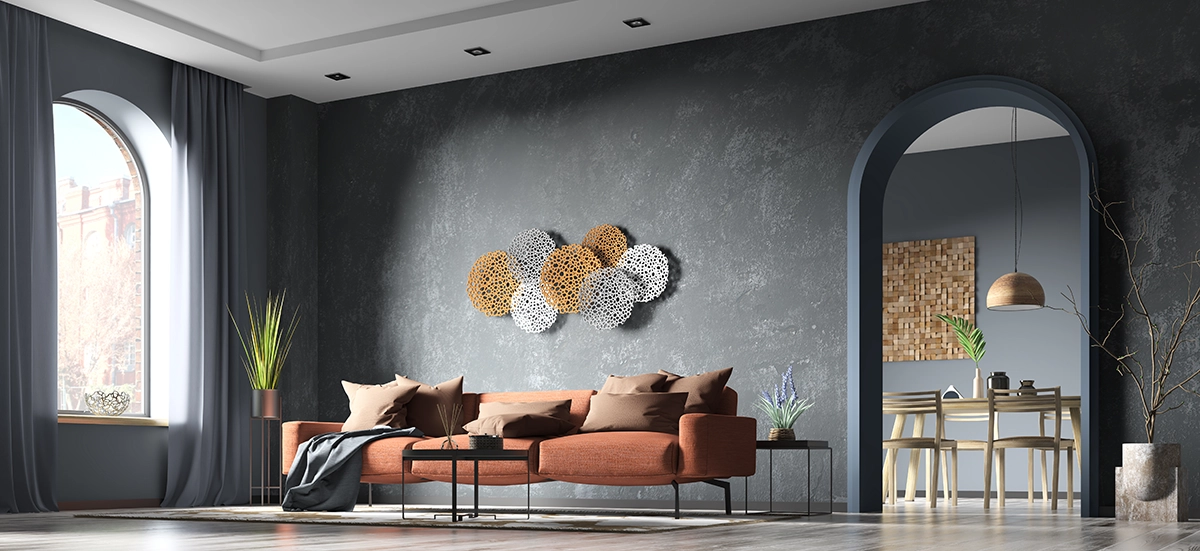
Here are some more specific examples of manmade textures that you can use in your home decor:
- Metal:brushed nickel cabinet hardware, copper pendant light, hammered metal vase
- Plastic:acrylic dining table, polycarbonate chairs, resin lamp
- Glass:subway tile backsplash, glass chandelier, glass coffee table
- Concrete:concrete countertop, concrete floor tiles, concrete planter
- Brick:exposed brick wall, brick fireplace surround, brick coffee table
- Tile:ceramic tile floor, mosaic tile backsplash, encaustic tile shower
- Fabric:velvet sofa, brocade curtains, linen throw pillows
- Paper:wallpaper, origami artwork, paper lantern
- Canvas:canvas wall art, canvas tote bag, canvas beanbag chair
- Leatherette:leatherette sofa, leatherette bar stools, leatherette luggage tag
- Vinyl:vinyl record player, vinyl floor tiles, vinyl tablecloth
- Faux fur:faux fur blanket, faux fur throw pillow, faux fur rug
The role of texture in interior design comes in many forms, finishes, and colors all working together to make your space stylish and unique.
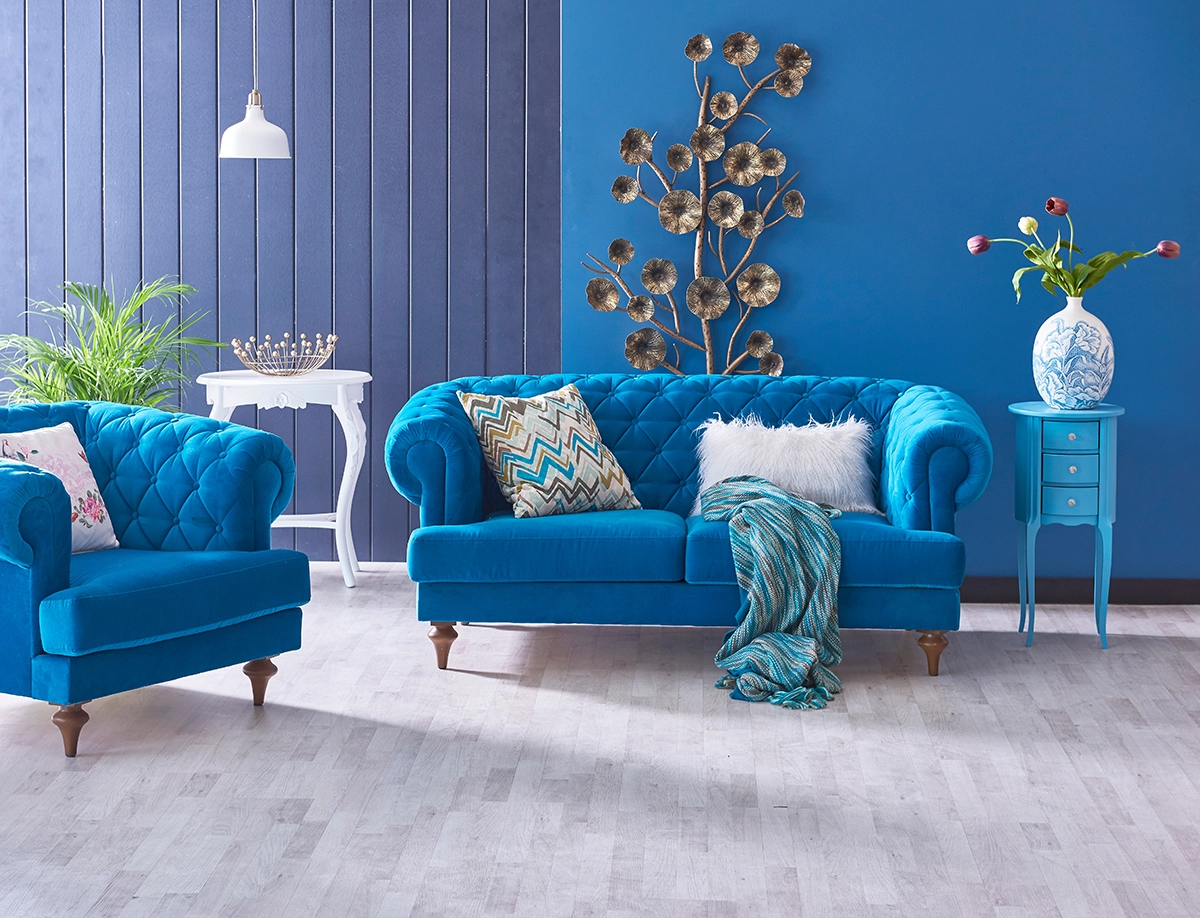
Different Types of Texture in Interior Design
When it comes to interior design, texture is an essential element that can make or break the overall aesthetic of a room. Texture refers to the surface quality of an object or material and how it feels to the touch. It adds visual depth and interest to a space, creating a more dynamic and engaging environment.
One of the main roles of texture in interior design is to create contrast and balance. By incorporating different textures, you can create a visually appealing space that is not only visually interesting but also pleasing to the touch. For example, pairing a smooth leather sofa with a chunky knit throw creates a beautiful contrast between sleek and cozy textures.
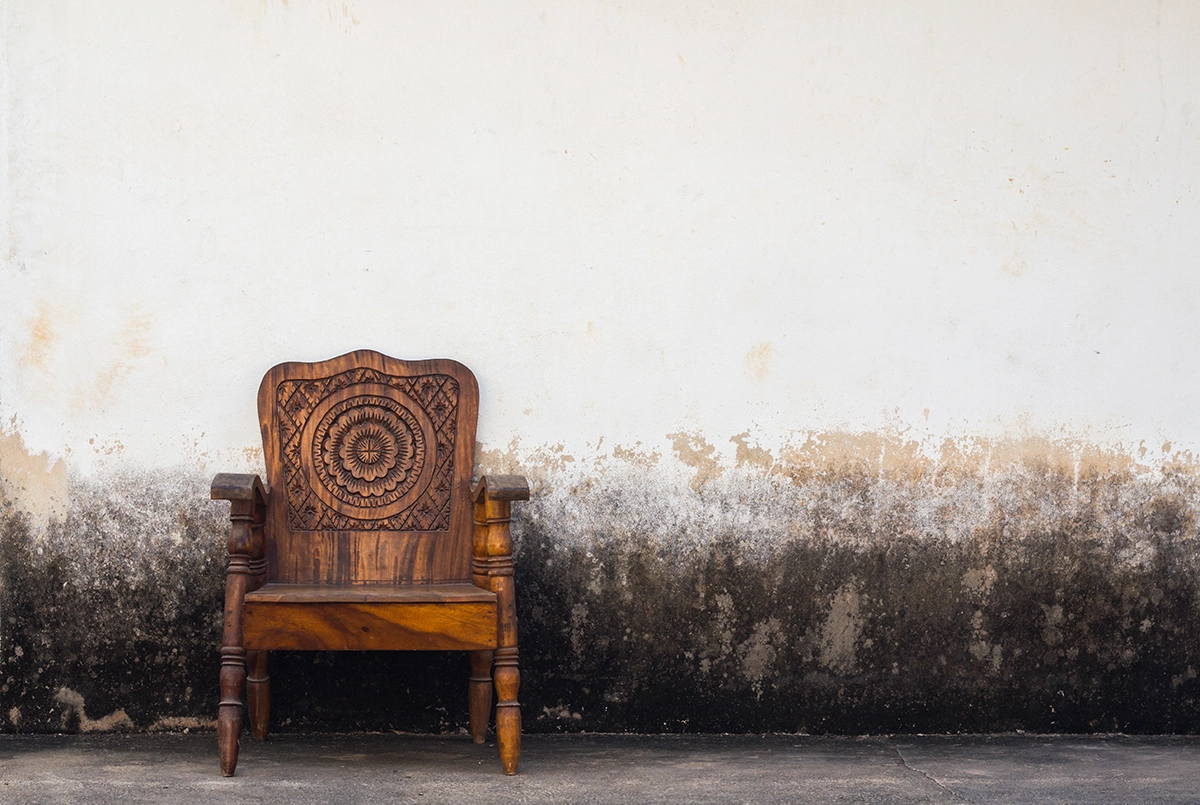
Texture also helps to define the style and mood of a room. A room with rough textures, such as exposed brick walls or distressed wood furniture, can create a rustic and inviting atmosphere. On the other hand, a room with smooth and glossy textures, like polished marble or glass surfaces, can evoke a sense of modernity and sophistication.
In addition to visual appeal, texture also plays a crucial role in creating a sense of comfort and coziness. Soft and plush textures, such as velvet upholstery or fluffy carpets, can make a space feel warm and inviting. On the contrary, rough textures, like textured wallpapers or woven wall hangings, can add an element of texture and interest to an otherwise plain room.
By understanding the role of texture in creating a visually appealing space, you can make informed choices when it comes to selecting materials and furnishings for your interior design projects. The right combination of textures can elevate the overall aesthetic of a room and create a more inviting and engaging space.

Using Textiles and Accessories to Add Texture to a Room
Texture in interior design can be categorized into various types, each with its own unique characteristics and visual impact. By understanding the different types of textures, you can effectively incorporate them into your design scheme to achieve the desired look and feel.
The role of texture in interior design includes the following forms and how we perceive them:
Visual Texture: Visual texture refers to the perception of texture through sight alone. It is created by using materials or patterns that mimic the appearance of a specific texture. For example, a wallpaper with a brick pattern can create the illusion of a textured brick wall without actually having a physical texture.

Eco-Friendly Tip of the Day: Eco-friendly, renewable grasscloth wallpaper is constructed from natural fibers and is usually 100 percent recyclable. Organic refined grasscloth with its natural grasses and fibers brings instant texture to your space
Tactile Texture: Tactile texture refers to the actual physical texture of a material or surface. It is the texture that can be felt and experienced through touch. Tactile textures can vary from smooth and sleek to rough and textured. Examples include a smooth marble countertop, a rough stone fireplace, or a soft velvet cushion.
Textile Texture: Textile texture refers to the texture created by fabrics and textiles. Fabrics can have different textures based on the weave, thickness, and pattern. Examples of textile textures include the softness of velvet, the roughness of burlap, or the smoothness of silk.

Pattern Texture: Pattern texture refers to the visual texture created by repeated elements or patterns. Patterns can add depth and interest to a space, creating a sense of texture even without physical texture. Examples of pattern textures include chevron patterns, herringbone designs, or floral prints.
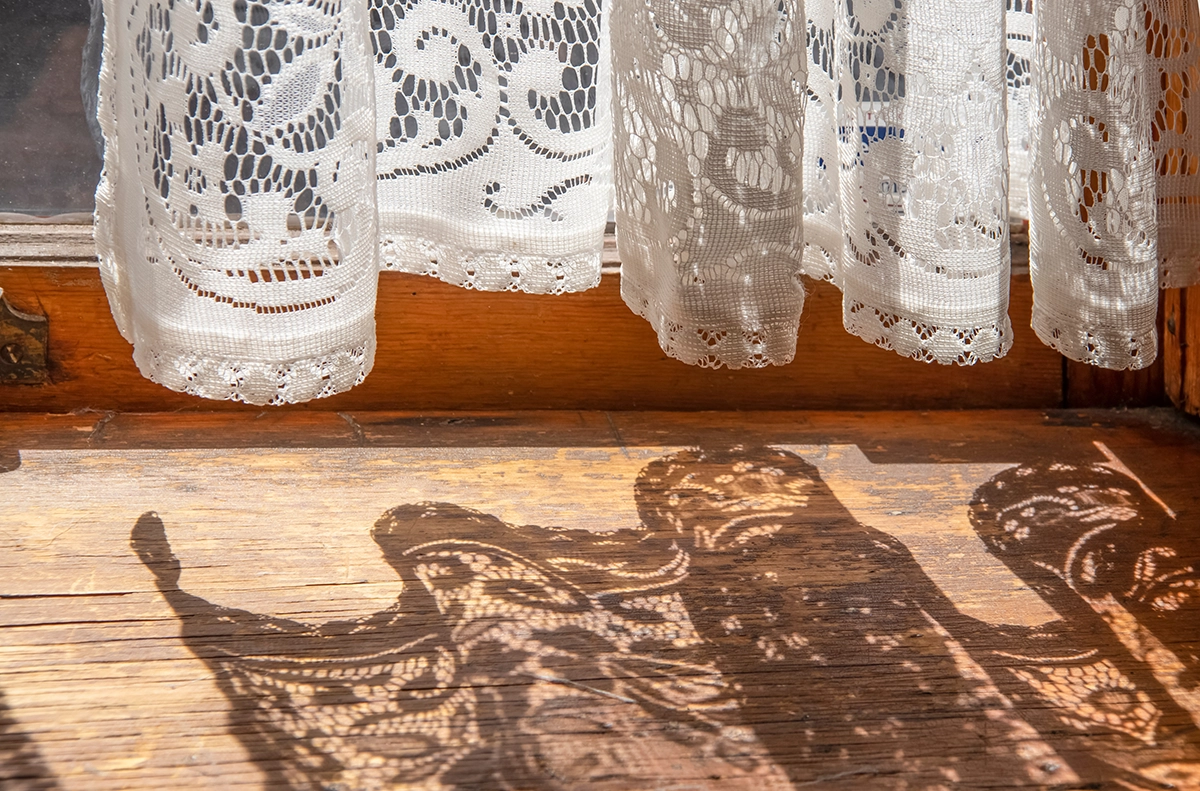
Lighting Texture: Lighting can also create texture in a room by casting shadows and highlighting certain surfaces. By strategically placing lights and using different lighting techniques, you can create a textured effect that enhances the overall design. For example, uplighting a textured wall can create a dramatic and visually interesting effect.
By incorporating different types of textures into your interior design, you can create a space that is visually captivating and engaging. Experiment with different textures and combinations to achieve the desired look and feel for your space. The role of texture in interior design cannot be overstated, it is an essential design element. Architectural features often have texture in their designs that are referred to as optical texture
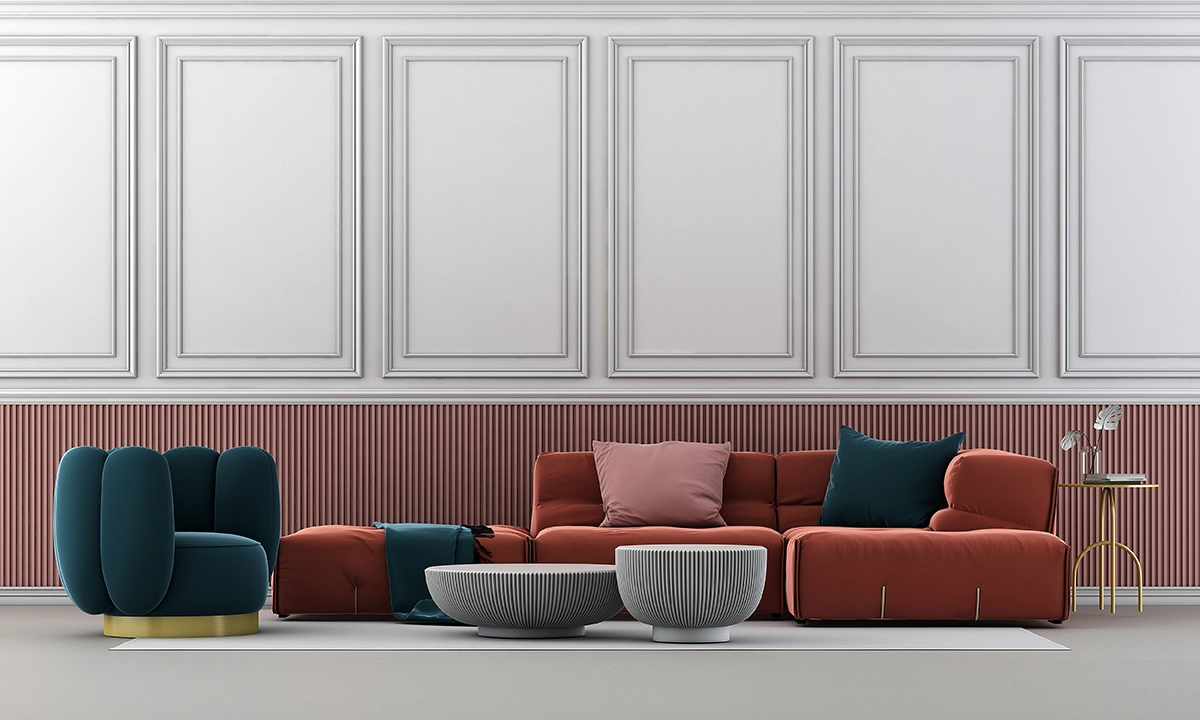
Incorporating Texture Through Furniture and Upholstery
One of the most effective ways to incorporate texture into your interior design is through furniture and upholstery. Furniture pieces with different textures can add visual interest and depth to a room, creating a more dynamic and inviting space.
When selecting furniture, consider the texture of the materials used. Opt for pieces with tactile textures that invite touch and create a sense of comfort. For example, a leather sofa with a distressed finish or a fabric armchair with plush velvet upholstery can add warmth and texture to a living room.
In addition to the materials, consider the shape and design of the furniture. Furniture with interesting textures can become a focal point in a room and add character to the overall design. For example, a coffee table with a hammered metal surface or a sideboard with intricately carved details can add texture and visual interest to a space.

Another way to incorporate texture through furniture is by layering different materials. Mix and match materials such as wood, metal, glass, and fabric to create a visually appealing and tactile experience. For example, pairing a wooden dining table with upholstered chairs and a glass centerpiece can create a beautiful contrast of textures.
When it comes to upholstery, consider using fabrics with different textures to add depth and visual interest. Mix smooth fabrics with textured ones to create a visually dynamic seating area. For example, combining a smooth leather sofa with a textured fabric ottoman or adding a patterned throw pillow to a plain upholstered chair can instantly enhance the texture of a room.
By carefully selecting furniture and upholstery with different textures, you can create a visually captivating and inviting space that is both aesthetically pleasing and comfortable.

Enhancing Texture with Wall Treatments and Finishes
Walls are an often-overlooked canvas for adding texture to a room. By incorporating textured wall treatments and finishes, you can create a visually interesting backdrop that enhances the overall design aesthetic.
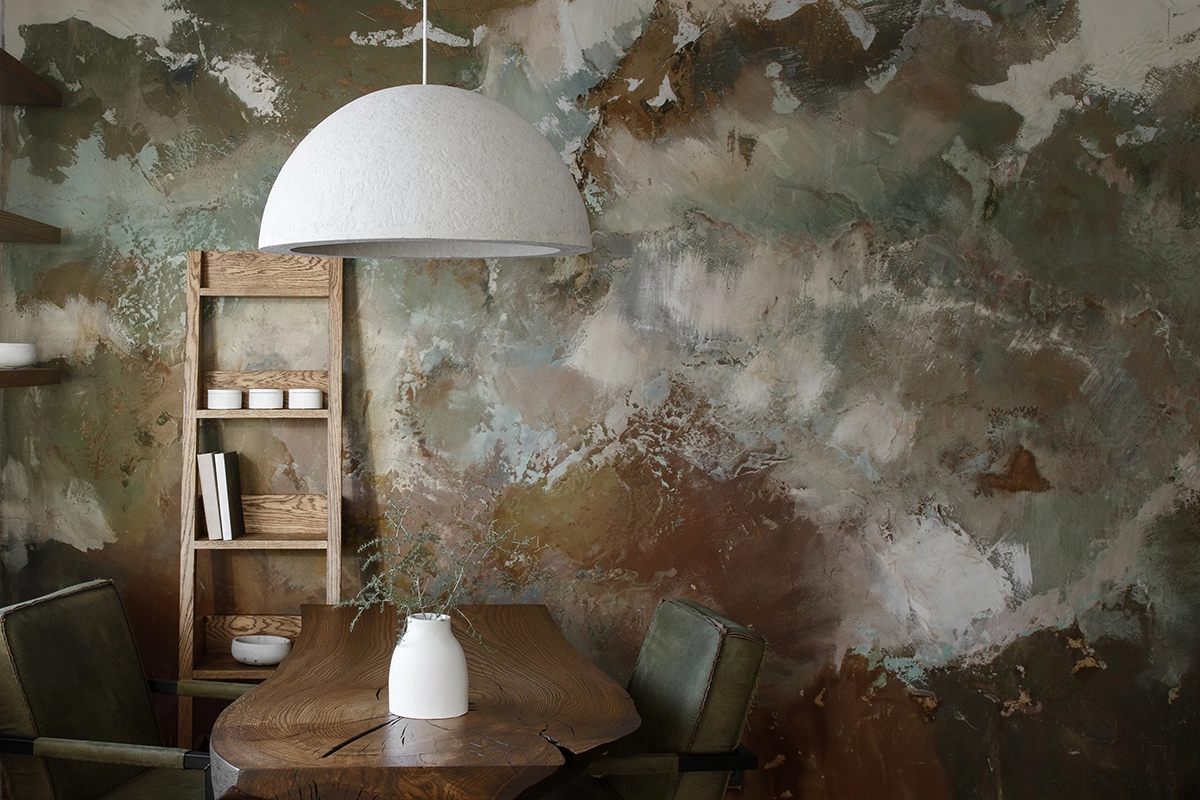
One of the simplest ways to add texture to walls is through paint techniques. Instead of using a flat, smooth paint finish, consider using techniques like sponging, stippling, or rag rolling to create texture. These techniques create visual depth and interest, adding a sense of texture to the walls.
Another option for adding texture to walls is through wallpaper. Wallpaper comes in a wide range of textures and patterns, allowing you to create a unique and personalized look. Textured wallpapers can create the illusion of physical texture, adding depth and visual interest to a space. Consider using wallpapers with embossed patterns, grass cloth textures, or even metallic finishes for added visual impact.

For a more dramatic and bolder look, consider using wall panels or tiles with textured surfaces. These can be used to create accent walls or to add texture to specific areas of a room. Textured wall panels made from materials like wood, stone, or even fabric can create a focal point and add visual interest to a space.
In addition to paint and wallpaper, consider using wall treatments such as stucco, plaster, or wood paneling to add texture to walls. These treatments can create a rustic or traditional look, adding warmth and character to a room. Textured finishes like stucco or Venetian plaster can create a visually interesting and tactile experience.
By incorporating textured wall treatments and finishes, you can transform plain walls into visually captivating backdrops that enhance the overall design aesthetic of a room. Experiment with different techniques and materials to find the perfect texture for your space.
Interior Design Pro Tip: Layer different textures to create a space that is rich and full of depth. Different textures reflect light in different ways giving your space more interest. This essential design element can make or break a room’s aesthetic. Striking the right balance takes some trial and error, try mixing fabrics and finishes with various textures and lighting until you achieve the desired effect.
Balancing Texture with Other Design Elements
Textiles and accessories are versatile elements that can easily be used to add texture to a room. From rugs and curtains to cushions and throws, these elements can instantly enhance the texture of a space and create a more inviting and cozier atmosphere.
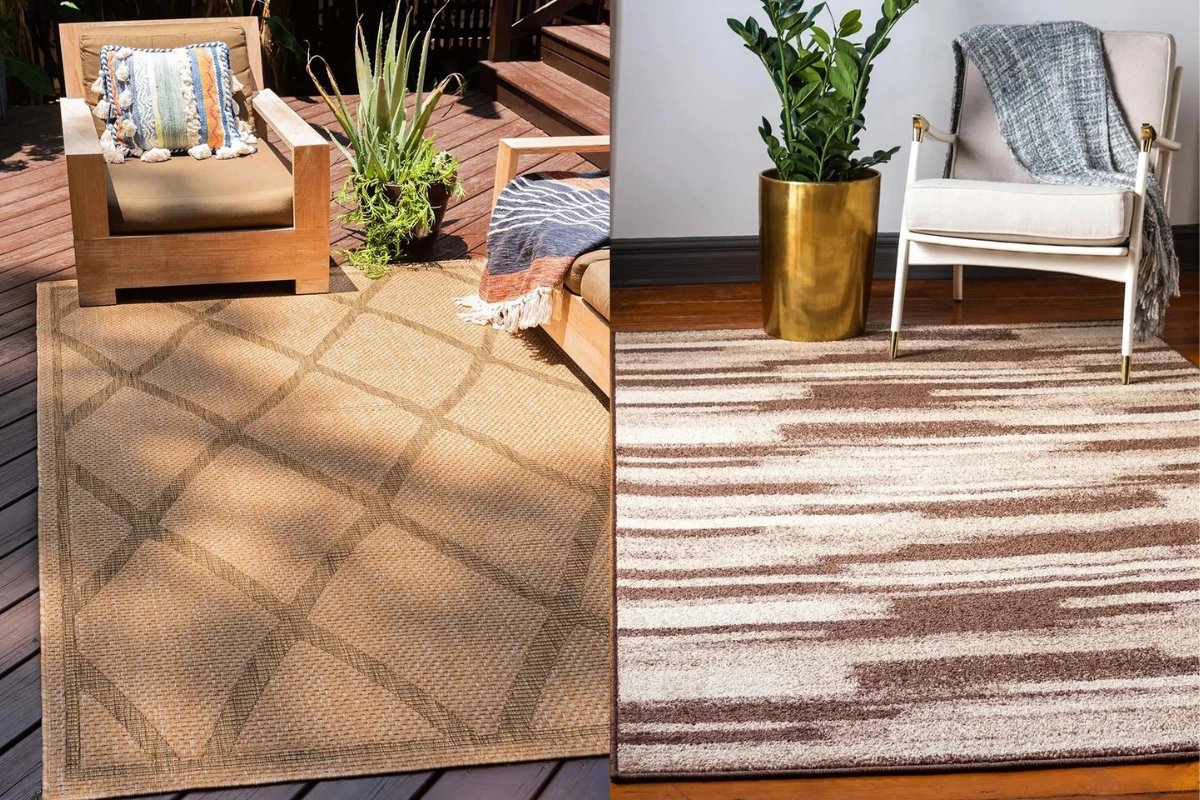
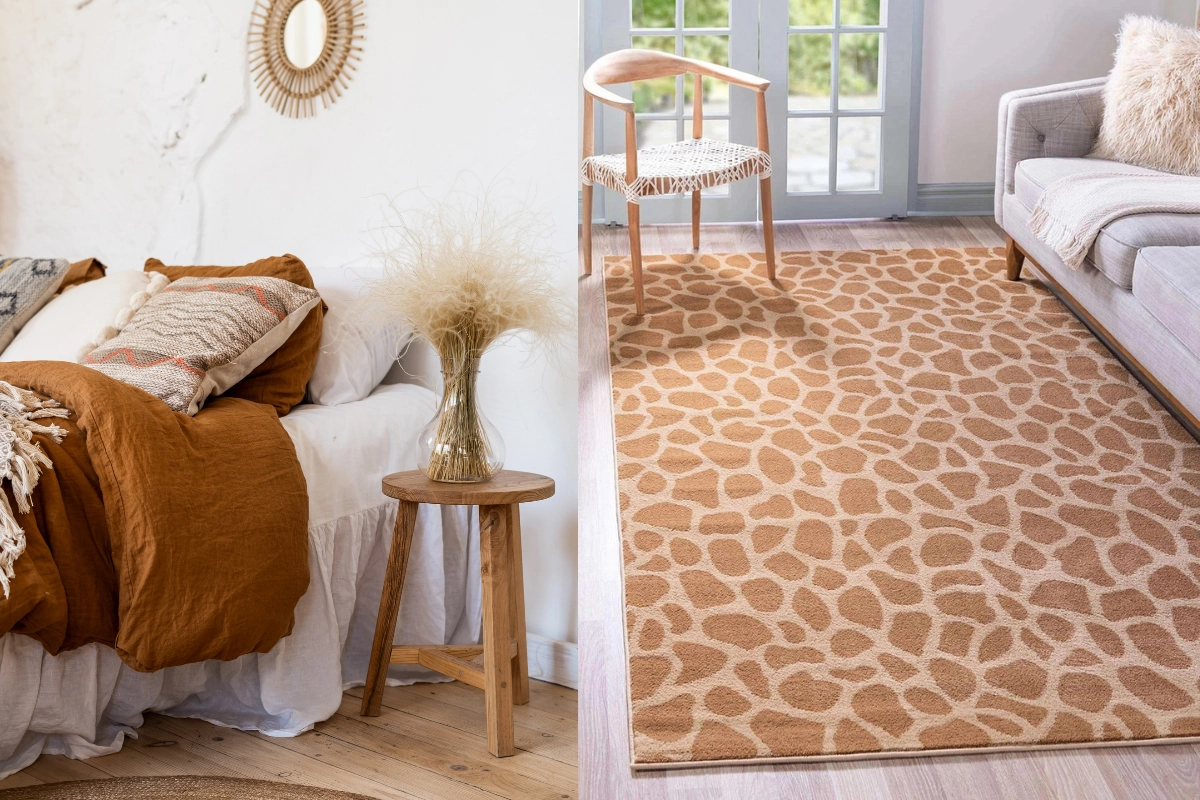
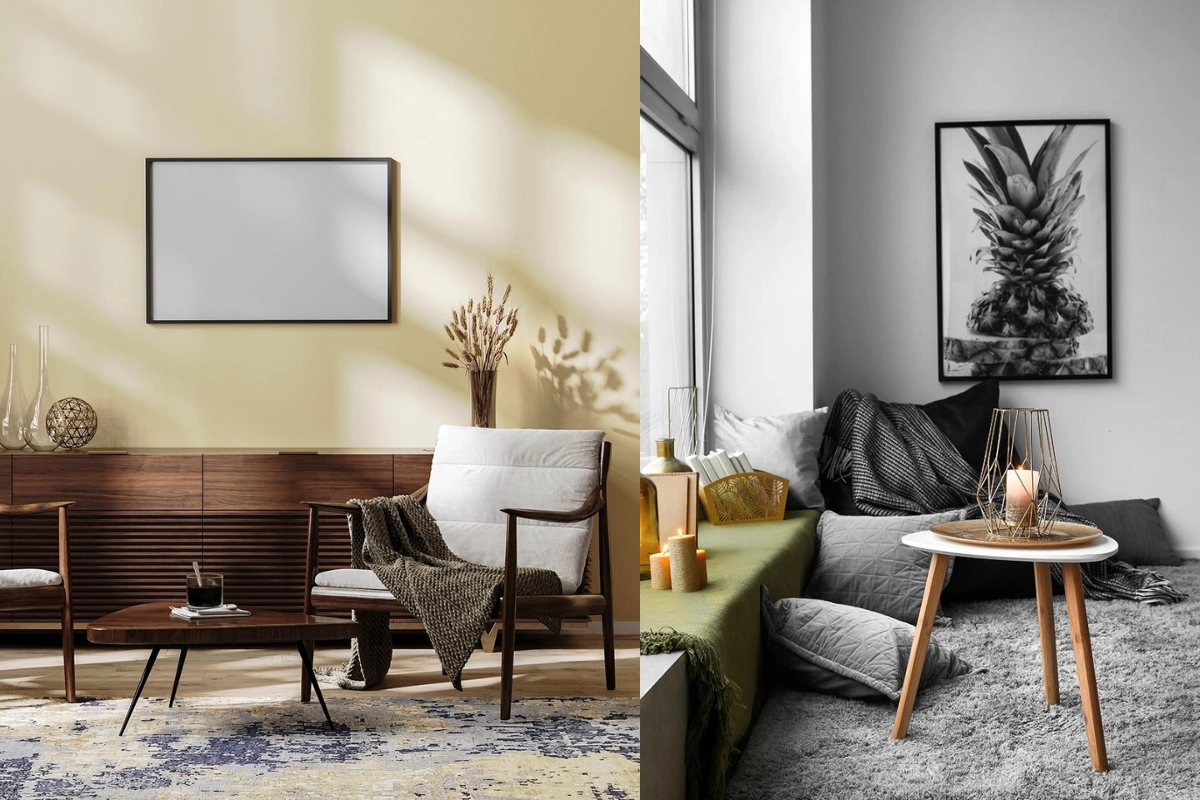
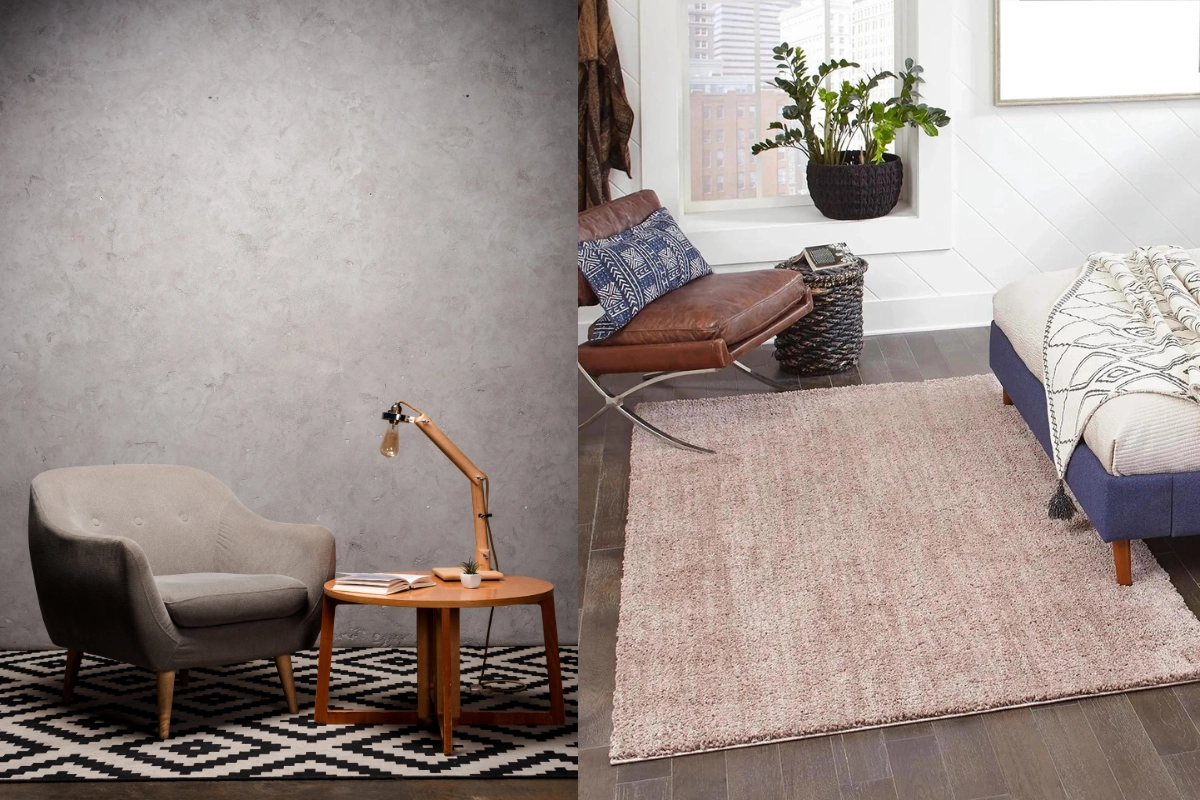
Inexpensive Easy Addition of Texture Using Area Rugs
One of the easiest ways to add texture to a room is by incorporating rugs. Rugs come in a variety of textures, from plush and soft to rough and woven. A plush rug can add warmth and comfort to a living room or bedroom, while a woven rug can create a more natural and organic feel. Consider using rugs with different textures to define different areas within a room and add visual interest.
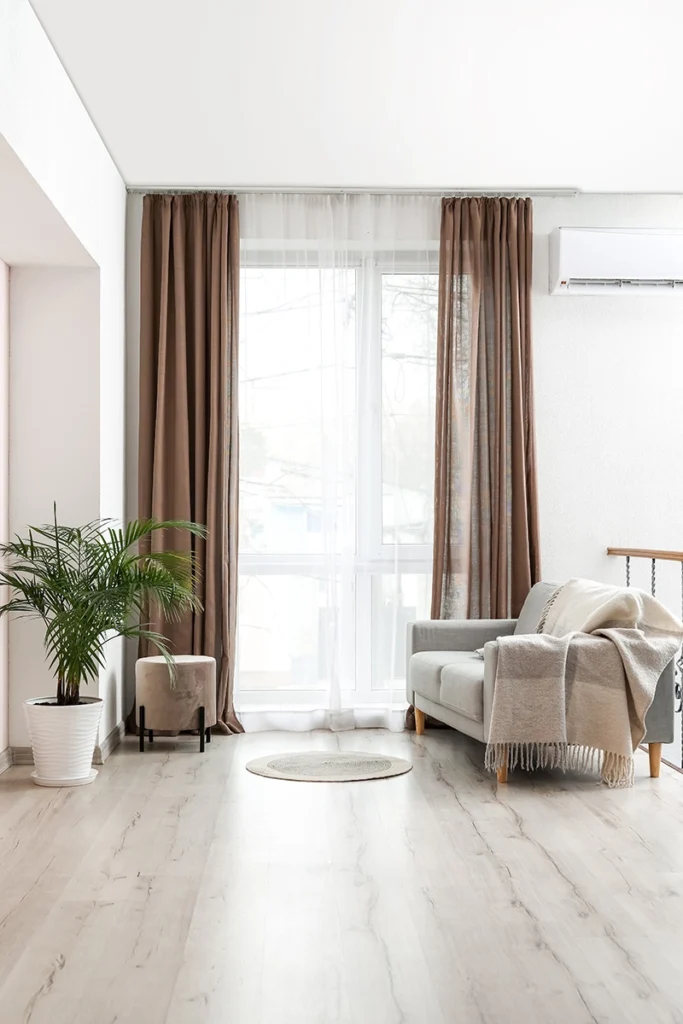
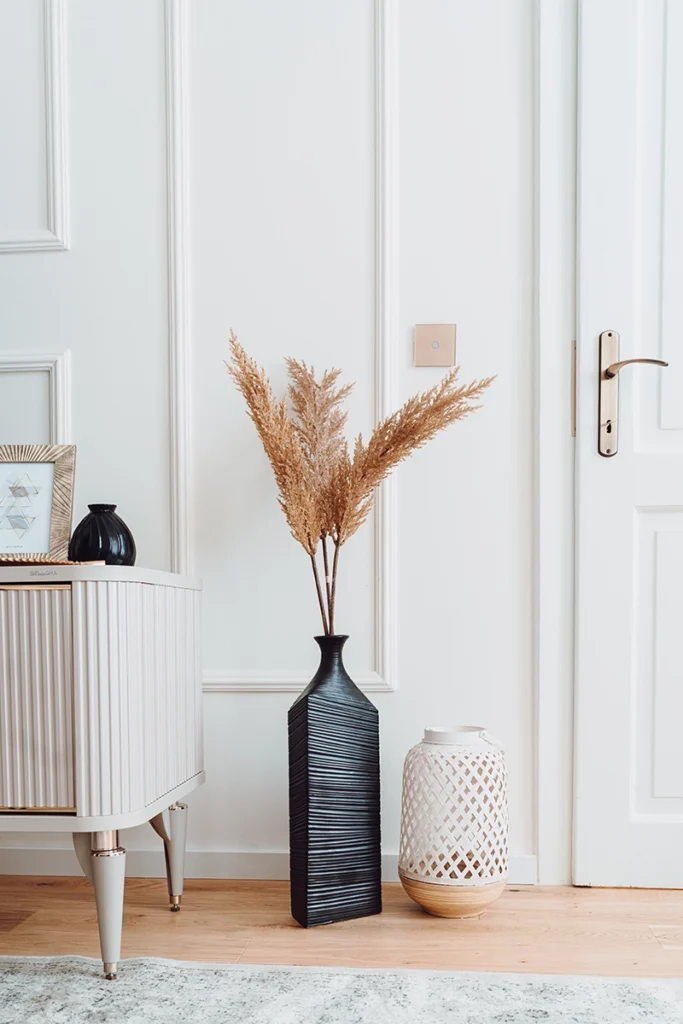
Curtains and draperies are another great way to incorporate texture into a space. Consider using curtains with a textured fabric, such as linen or velvet, to add visual interest and depth. Sheer curtains can create a soft and ethereal texture, while heavier drapes can add a sense of luxury and sophistication.
Cushions and throws are accessories that can easily be swapped out to add texture and visual interest to a room. Opt for cushions with different textures, such as velvet, faux fur, or knitted fabrics, to create a visually dynamic seating area. Adding a textured throw blanket to a sofa or armchair can instantly make the space feel cozier and more inviting.
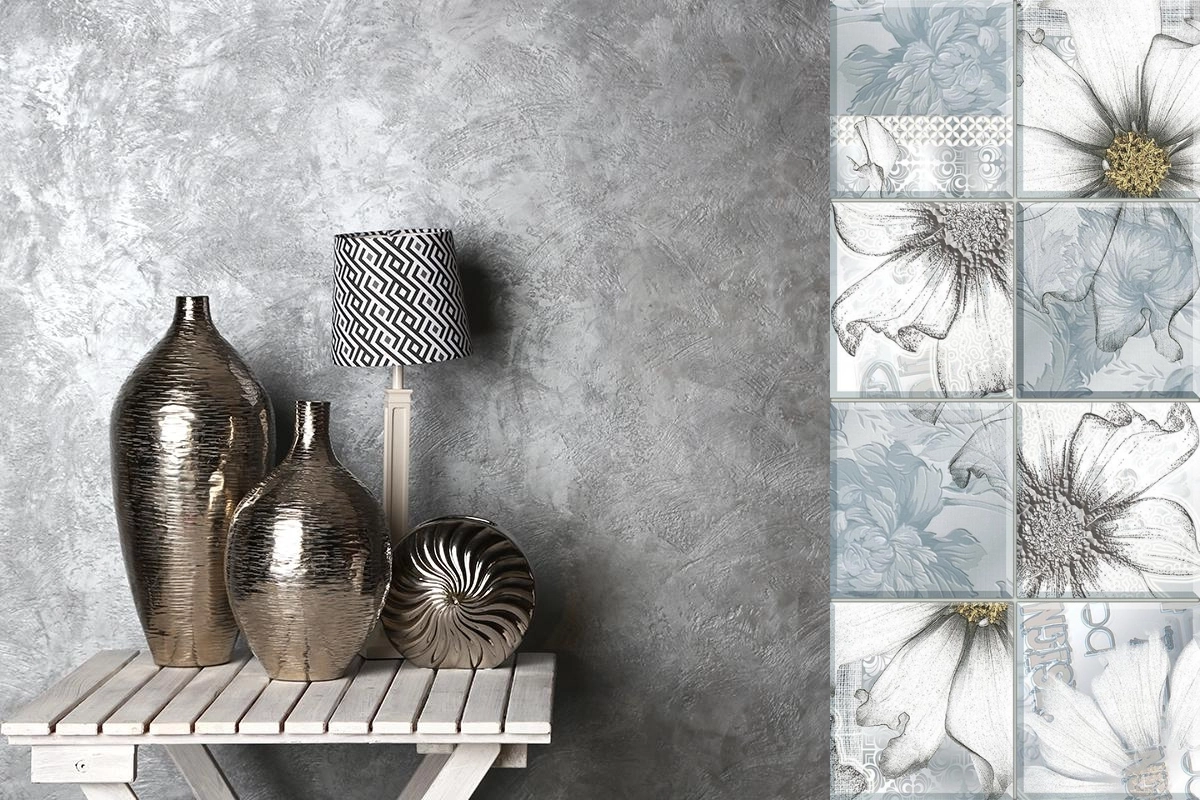
The Tactile Texture of Metal Adds a Touch of Glamour
In addition to textiles, consider incorporating accessories with different textures into your space. Decorative items such as vases, sculptures, or wall art can add visual interest and texture to a room. Look for items made from materials like ceramic, metal, or wood to create a tactile experience.
By using textiles and accessories with different textures, you can easily enhance the texture in a room and create a more visually captivating and inviting space.
Tips for Incorporating Texture Into Your Own Space
While the role of texture in interior design is an important element, it is crucial to balance it with other design elements to create a cohesive and harmonious space. By carefully considering the balance of texture, you can create a visually appealing and well-designed room.
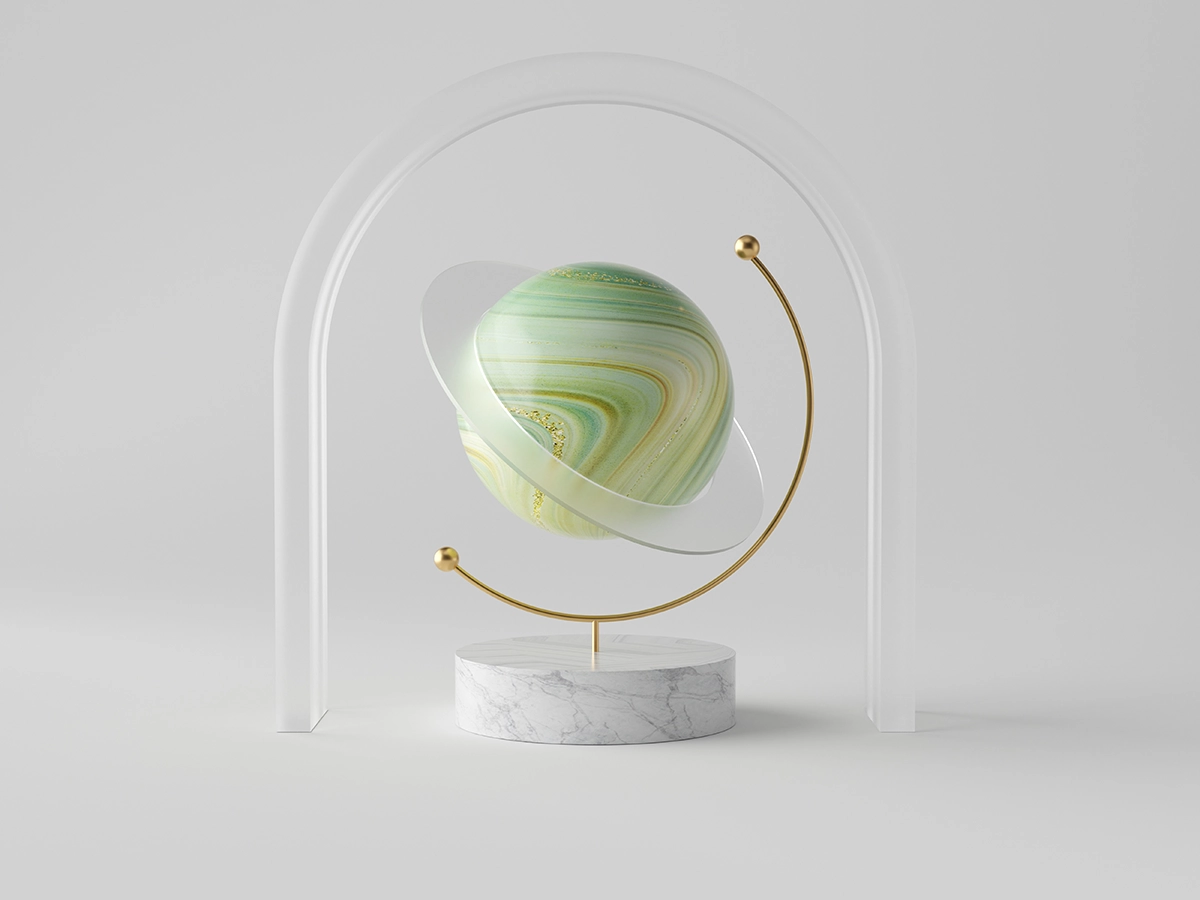
One of the key factors to consider when balancing texture is the scale and proportion of the elements in a room. Too much texture can create a visually overwhelming and cluttered space, while too little texture can make a room feel flat and boring. Aim for a balance between smooth and rough textures and consider the scale of the textures in relation to the size of the room.
Another factor to consider is the color palette of the space. Texture can be enhanced or subdued depending on the colors used. For example, light and neutral colors can highlight the texture of a rough wall or a textured fabric, while dark and bold colors can create a more dramatic and visually interesting effect.
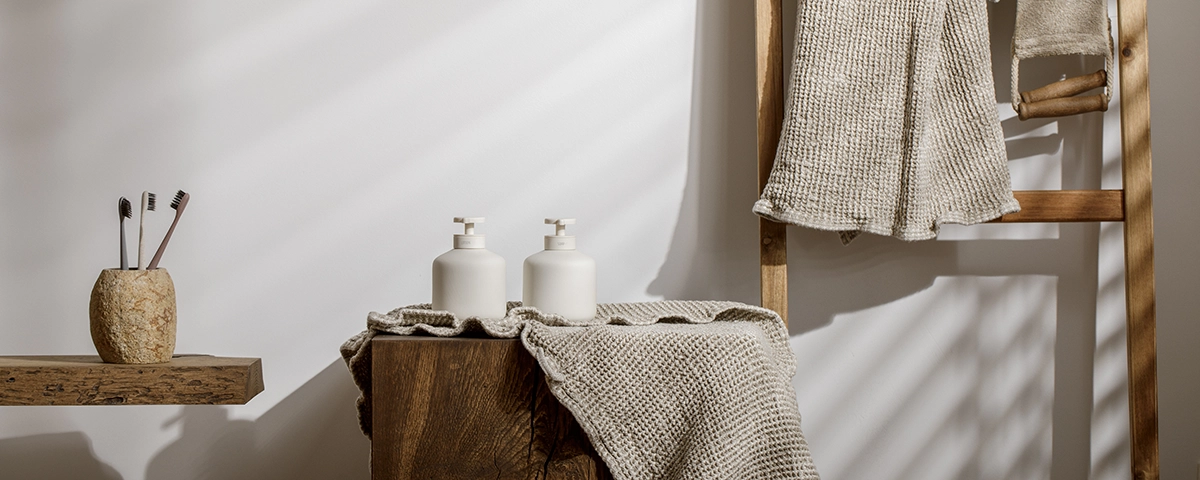
When balancing texture, also consider the style and theme of the room. Different design styles have different preferences when it comes to texture. For example, a modern and minimalist space may favor sleek and smooth textures, while a rustic or bohemian room may embrace rough and organic textures. Ensure that the textures you choose align with the overall style and theme of the room.
Lastly, consider the functionality and purpose of the space. Texture should not only be visually appealing but also serve a purpose. For example, in high-traffic areas such as hallways or entryways, opt for durable and easy-to-clean textures that can withstand wear and tear. In bedrooms or living rooms, focus on creating a cozy and comfortable atmosphere with soft and plush textures.
By carefully balancing texture with other design elements, you can create a visually appealing and well-designed space that is both aesthetically pleasing and functional.
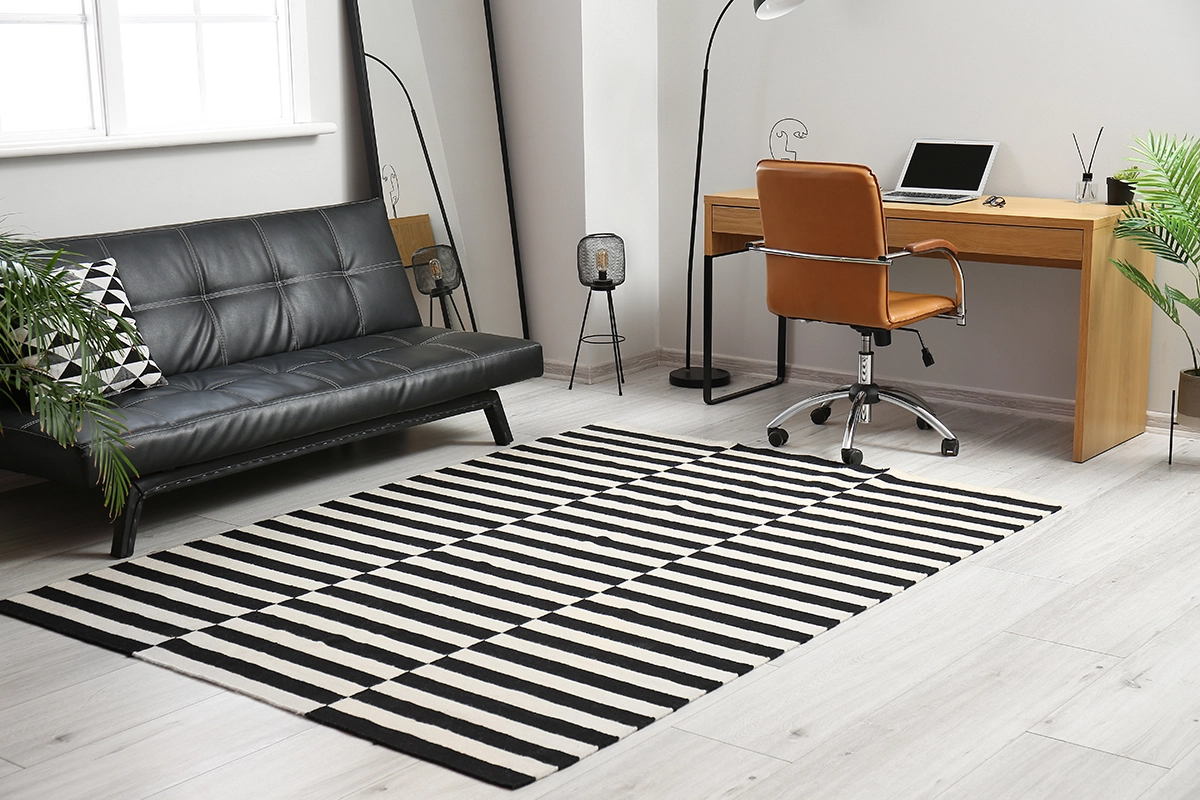
The Role of Texture in Different Interior Design Styles
Texture plays a significant role in defining different design styles. Each design style has its own preferences when it comes to texture, and understanding these preferences can help you create a cohesive and harmonious space that aligns with the desired style.
Geometrics can add visual texture to a space. Area rugs, pillows, throws, baskets, and other decor items with geometric patterns add depth through patterns as well as physical, touchy, feely rough, or smooth finishes.

Modern Style: In modern design, texture is often used to create a sleek and sophisticated look. Smooth and glossy textures, such as polished surfaces or glass elements, are commonly used to create a sense of modernity and cleanliness. Minimalist furniture with clean lines and smooth finishes is often preferred in modern spaces. Polished marble imparts a modern sophisticated aesthetic to a space.
Rustic Style: Rustic design embraces natural and organic textures. Rough and textured materials, such as exposed wood beams, stone walls, or distressed furniture, are commonly used to create a warm and inviting atmosphere. Textiles with a handmade or worn look, such as burlap or woven fabrics, can also add to the rustic texture.
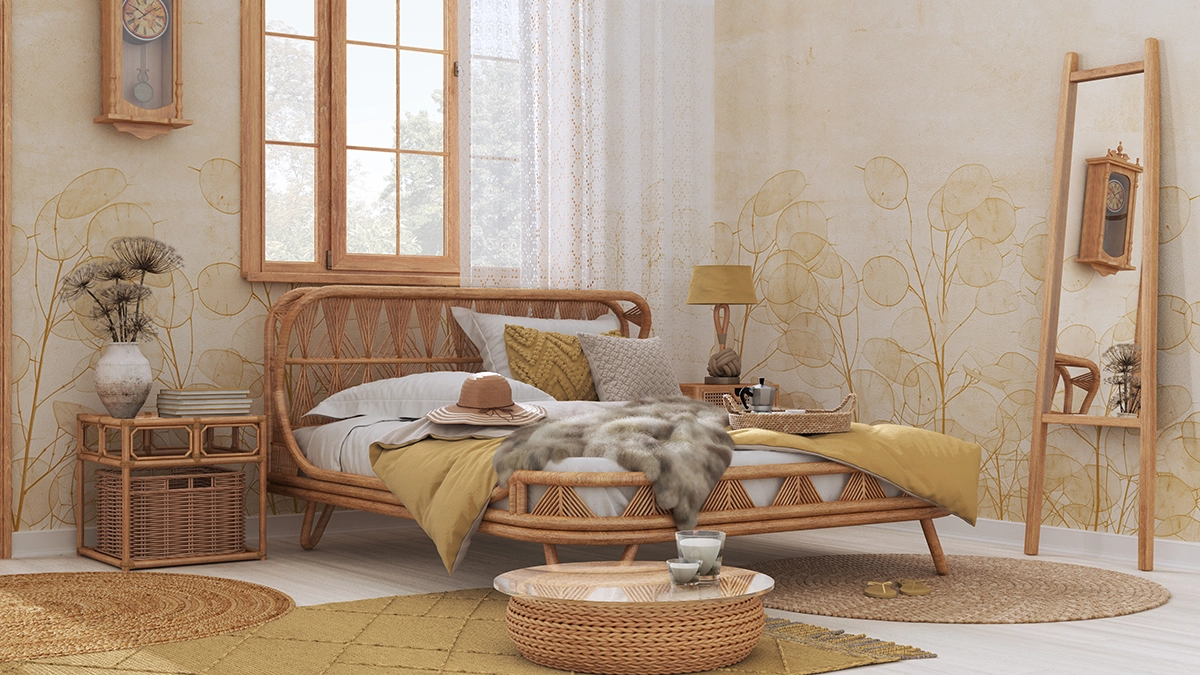
Bohemian Style: Bohemian design is all about embracing texture and creating a visually rich and layered look. Mixing and matching different textures, such as velvet, fringed fabrics, or woven elements, is common in bohemian spaces. The focus is on creating a cozy and eclectic atmosphere with a sense of free-spiritedness.
Scandinavian Style: Scandinavian design often favors light and natural textures. Smooth and matte surfaces, such as light wood furniture or white-painted walls, are commonly used to create a clean and minimalist look. Texture is often added through textiles, such as wool or sheepskin, to create a sense of warmth and coziness.
Industrial Style: Industrial design embraces rough and raw textures. Exposed brick walls, concrete floors, or metal surfaces are commonly used to create an industrial look. The focus is on creating a sense of urban and utilitarian style with a rough and unfinished texture.
Understanding the texture preferences of different design styles can help you create a space that aligns with the desired style and creates a visually appealing and cohesive look.
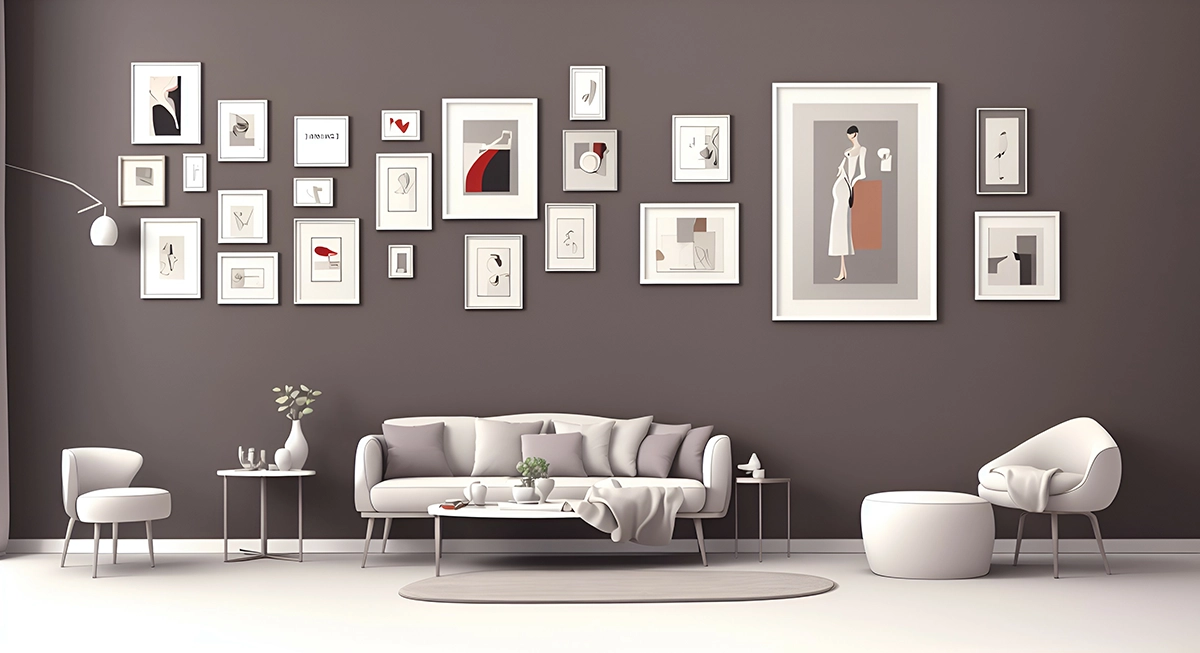
In Conclusion, The Role of Texture in Interior Design
In conclusion, the role of texture in interior design is an important one. Incorporating texture into your own space can be a fun and creative process. Here are some final tips to help you effectively incorporate texture and create a visually appealing and engaging environment.
Start with a neutral base: Begin by selecting a neutral color palette for your space. Neutral colors provide a versatile backdrop for incorporating different textures and allow the textures to take center stage.
Mix and match materials: Experiment with different materials to create a visually interesting mix of textures. Mix smooth and rough textures, shiny and matte surfaces, or soft and hard materials to create a dynamic and visually appealing space.
Layering textiles: Creating a visually appealing and inviting home can be so rewarding. One of the best ways to do this is to layer textures and textiles throughout your space. You can easily add texture and personality to your home with textiles. So have fun with it and experiment to create a space that you love!
Read about using contrast in interior design here.
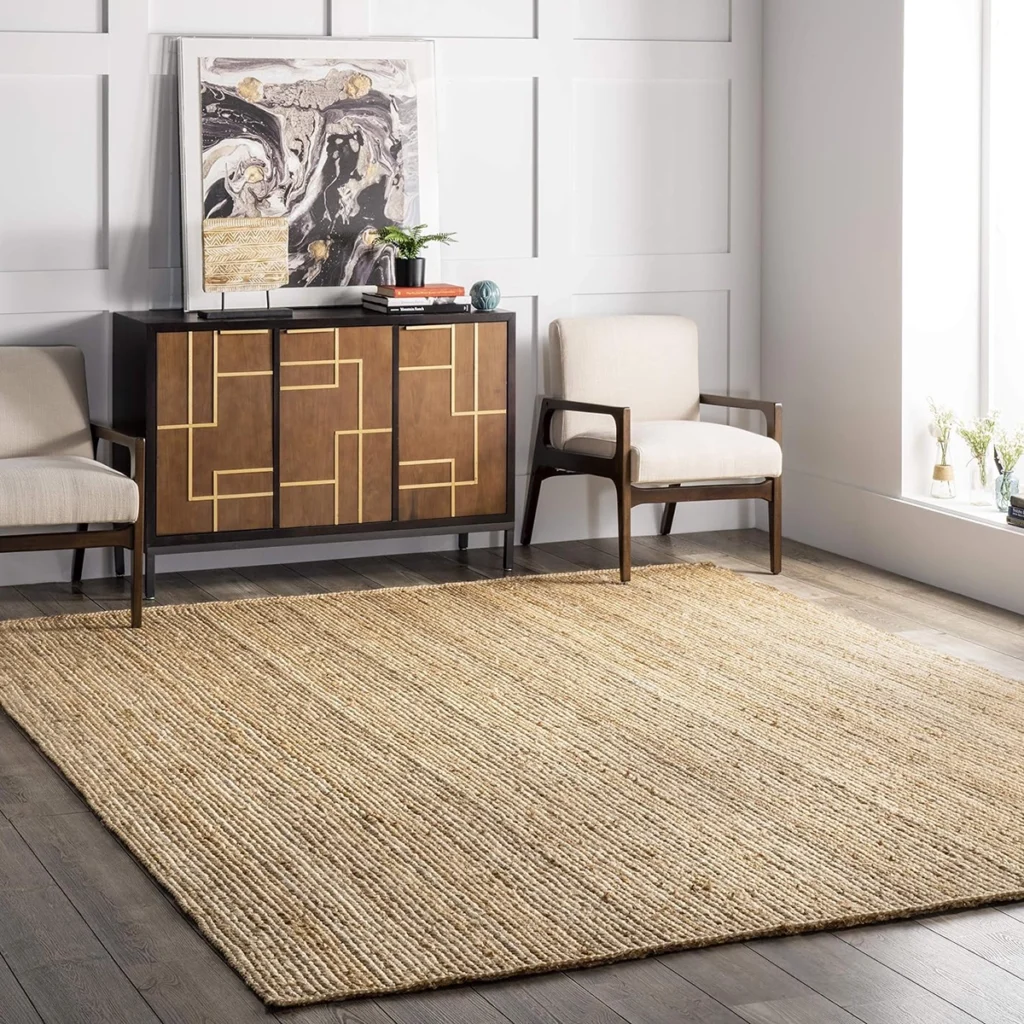
barbie decoratebarbie decoratingbarbie decorationsbarbie house smallbarbie surferbold colorscalming colorscolorcolor combinationcolor palettecolor trendscontrastdecorating vinyl recordsdecor junkiediydiy home decorgreeneryhome decorhome decor color trends 2023home decor ideashome decor inspirationhome decor styleshome interior designIDJ Interior Designs Junkieinterior designInterior design junkieinteriordesignsjunkieinteriordesignsjunkie.cominterior design trendslightingliving roommid century modernmodern interior designMood boards for interior designorganizescalescale and proportionScandinavianstatement piecessurfer barbietexturetimelesstypes of home decor styleswall artwhat interior design
Organic grasscloth is crafted of natural grass and fibers. Grasscloth wallpaper consists of wallpaper panels constructed of grasscloth which imparts a stippling effect, designed to be mounted to the wall. It is eco-friendly, renewable, and typically 100% recyclable.
